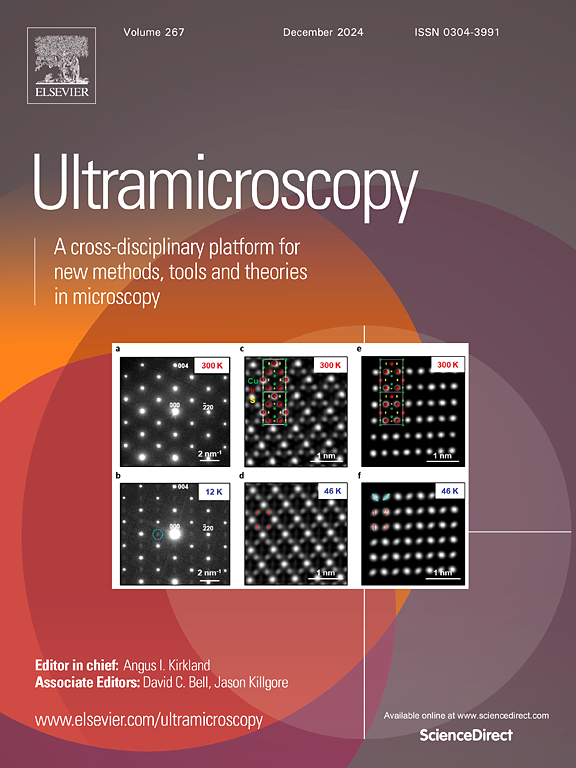Splicing dual-range EELS spectra: Identifying and correcting artefacts
IF 2
3区 工程技术
Q2 MICROSCOPY
引用次数: 0
Abstract
In dual or multiple range electron energy loss spectroscopy, splicing the low loss spectra together with core loss ranges allows Fourier-log deconvolution of the entire energy range. However, because of the huge intrinsic dynamic range in EELS, the intensity at the splice point in a low loss spectrum is typically small, meaning that even weak or subtle artefacts can have big effects. Three main sources of artefacts in a Gatan GIF Quantum system have been investigated: non-uniformity of energy dispersion caused by aberrations in the spectrometer optics, stray scattering in the detector chamber, and small differences between the responsivity of the different detector quadrants. We present methods to measure, quantify and correct these artefacts. Ideally, the ratio for scaling at the splice should be the ratio of integration times. Prior to correction, the scaling factor is found to be about 15 % less than the exposure or time ratio and is dependent on the specimen thickness. After correction, the discrepancies are less than 0.5 %. This allows quantitative comparison of data taken at different points in time, even after major system changes, provided suitable artefact-correction datasets are taken. Whilst the detail is specific to one particular instrument, the principles are also applicable to newer spectrometers, including those with direct electron detectors.
拼接双量程EELS光谱:识别和校正伪影
在双或多量程电子能量损失谱中,将低损耗谱与核心损耗范围拼接在一起,可以对整个能量范围进行傅里叶-对数反褶积。然而,由于EELS的固有动态范围很大,在低损耗谱中,接合点处的强度通常很小,这意味着即使是微弱或微妙的伪影也会产生很大的影响。本文研究了Gatan GIF量子系统中伪像的三个主要来源:由光谱仪光学像差引起的能量色散的不均匀性,探测器腔内的杂散散射,以及不同探测器象限的响应度之间的微小差异。我们提出了测量、量化和纠正这些伪影的方法。理想情况下,在拼接处缩放的比率应该是积分时间的比率。在校正之前,发现比例系数比曝光率或时间比低约15%,并取决于试样厚度。经校正,差异小于0.5%。这允许对在不同时间点采集的数据进行定量比较,即使在系统发生重大变化之后,只要采用合适的人工校正数据集。虽然细节是特定于一个特定的仪器,原理也适用于较新的光谱仪,包括那些直接电子探测器。
本文章由计算机程序翻译,如有差异,请以英文原文为准。
求助全文
约1分钟内获得全文
求助全文
来源期刊

Ultramicroscopy
工程技术-显微镜技术
CiteScore
4.60
自引率
13.60%
发文量
117
审稿时长
5.3 months
期刊介绍:
Ultramicroscopy is an established journal that provides a forum for the publication of original research papers, invited reviews and rapid communications. The scope of Ultramicroscopy is to describe advances in instrumentation, methods and theory related to all modes of microscopical imaging, diffraction and spectroscopy in the life and physical sciences.
 求助内容:
求助内容: 应助结果提醒方式:
应助结果提醒方式:


